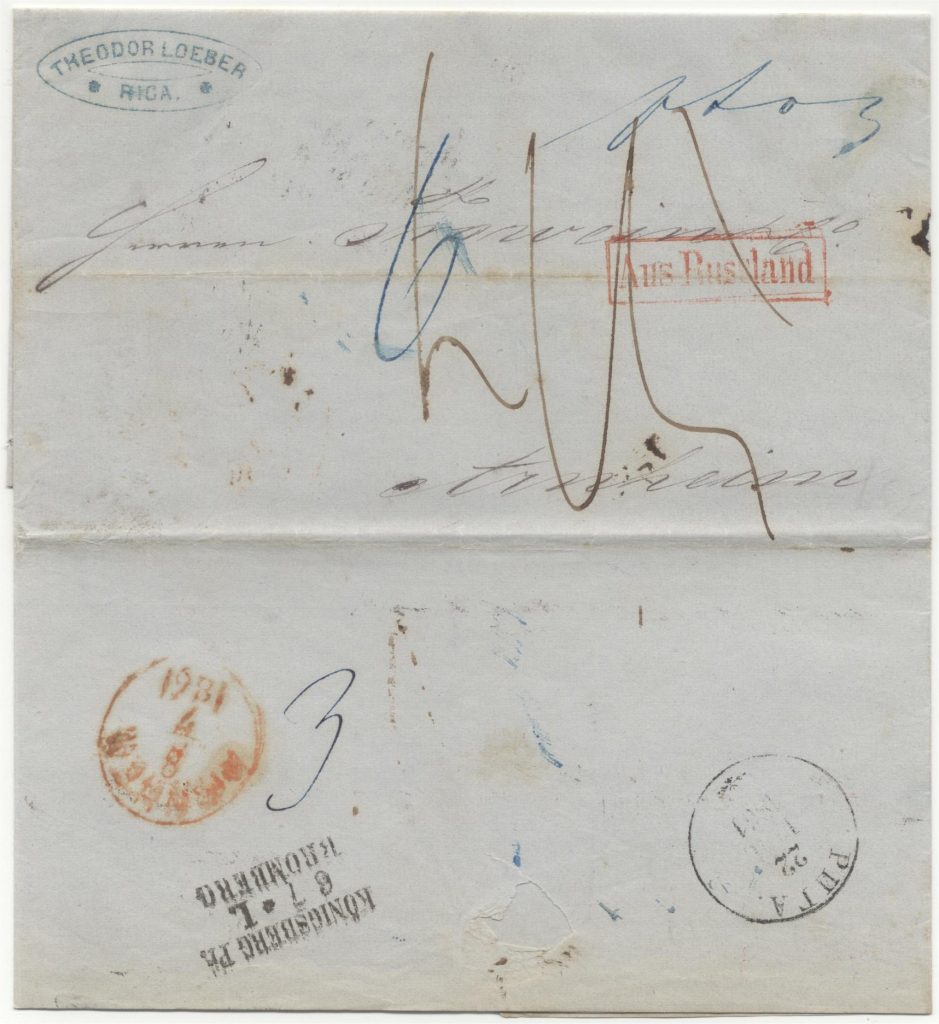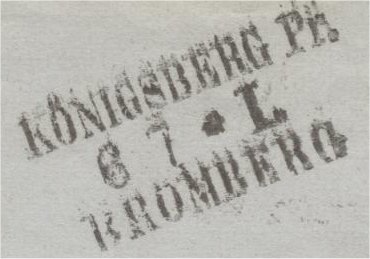
Before 1864 it was not possible to use postage stamps for post to other countries, and after 1864 it was not obliged. In 1876 the post introduced one rate for letters abroad: 8 kopeken (later 7 kopeken).
Ordered in 1843, but real 1 January 1844, new uniform postal rates are introduced in whole Russia. Letter of 1 lot”: 10 kop. in whole Russia.
Letters abroad get the same tariff on 1 November 1843 (10 kop. per lot), but this was as far as the border. This uniform tariff is maintained to 1875.
After introduction of postage stamps (1857) international letters had to be paid in cash. With the Edict of 13 April 1863 postage stamps were allowed also for international letters, but only for not-insured letters and printed matters. In this period, so before the U.P.U.-treaty of 1875, the rate differs by destination.
Inside the letter is indicated the date 4 July 1861. I suppose this is the Gregorian date. The Russian Empire used the old Julian calender to February 1918.I For our calendar, which most countries also used in that period, 12 days must be added in the period after 28 February 1800 through 28 February 1900, and 13 days through 28 February 2100.
So the stamp-date of Riga -22th- must be 22 June (is in the Gregorian calendar 4 July), arrival 8 July in the Netherlands (Arnhem).
 The postmark Königsberg / Bromberg is a transit postmark.
The postmark Königsberg / Bromberg is a transit postmark.
After the start of the German railways, there were two main ways from Russia passing the border: via Königsberg-Eytkuhnen-Wirballen in the north and one more south via Bromberg-Thorn-Warsaw.
Denis Vandervelde gives an overview of the transit -postmarks from Russia: the boxed postmark ‘Aus Russland’ , 34 x 10 mm is Type Ry4 in his classification, mostly in red, on not-paid letters 1858-1895. Early letter in this period have mostly the postmark of the railwaywagon of TPO-line Königsberg – Bromberg. From mid 1862 you see this ‘Aus Russland’ -postmark also on the route Eydtkuhnen-Bromberg (via Königsberg).
According the theory of Mr. Kidd thre is used one sorting-wagon for both railway-postoffices.
Railway postoffice 1 was Eydtkuhnen to Bromberg via Königsberg. Then Bromberg-Königsberg ; Königsberg-Bromberg (railway-postoffice 2). And back to Eydtkuhnen (there as railway-postoffice 1).
Literature:
- Deutsche Übergangsstempel d. 19. Jahrhundert für Briefe aus Russland / Denis Vandervelde. – In: Russland UdSSR : Mitteilungsblatt der Bundesarbeitsgemeinschaft 1976 ; nr. 1 (p. 4-15), nr. 2 (p. 7-24) and nr. 3 (p. 6-14)
- Vele wegen leiden uit Riga / Mr. A. v.d. Flier. – In: Het Baltische Gebied 2002 ; 41. – p. 20-21 [About: the many possible mail routes from Riga]
- Russische brieven zonder postzegels naar het buitenland : deel 1 / Ivo Steijn. – In: Het Baltische Gebied 2007 ; 50. – p. 24-29 [About: Russian letters without postage stamps to other countries, the routes and regulations]
- Riga, een keuze uit de verzameling van André / André de Bruin, Ruud van Wijnen. – In: Het Baltische Gebied 2007 ; 50. – p. 30-47 [About: pré-philatelic letters from Riga]
- Pré-U.P.U. Imperial Russian postal rates / by John V. Woollam
In: The Post-Rider 1996 ; no. 38. – p. 4-10 [rates to international destinations]